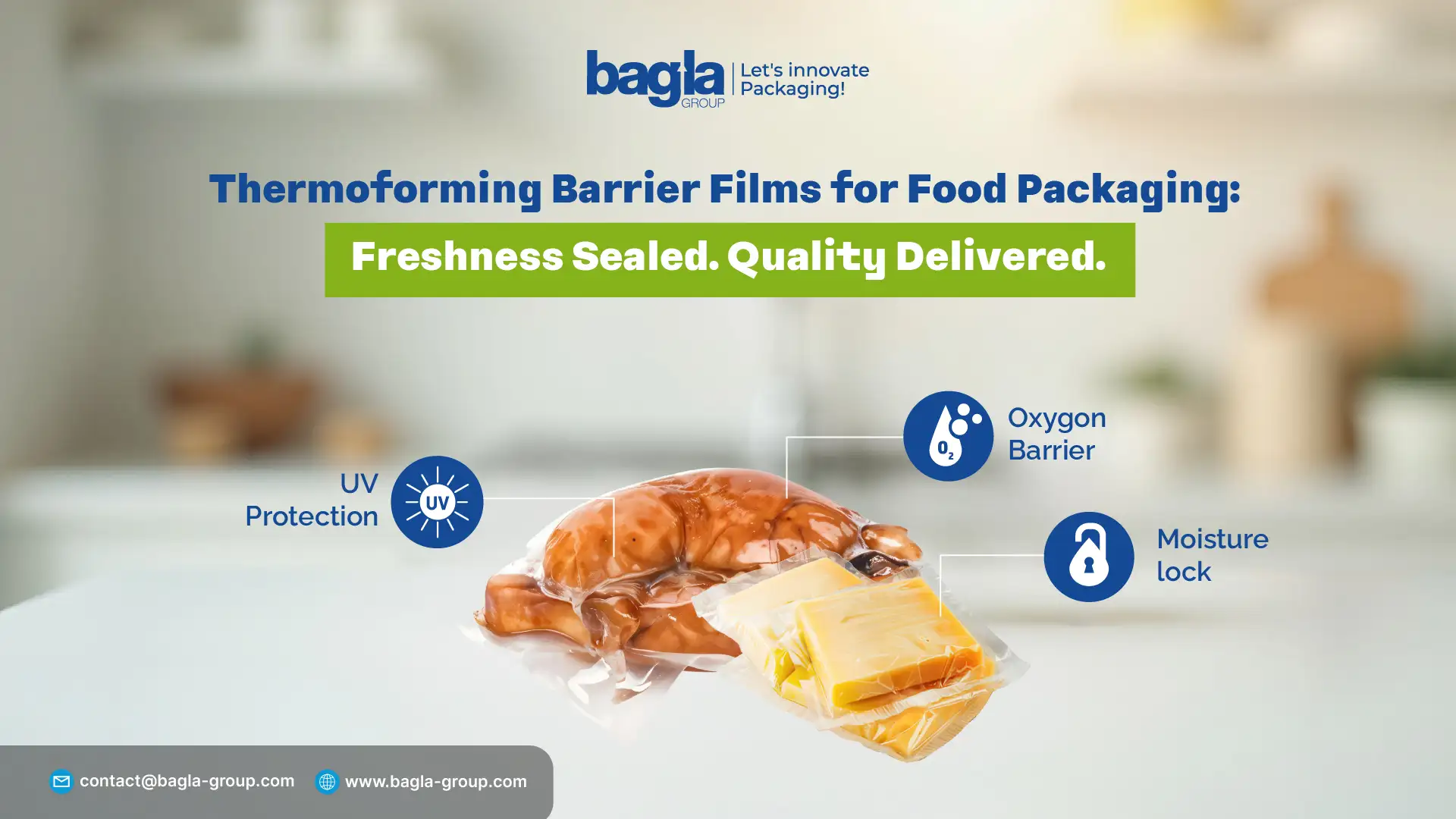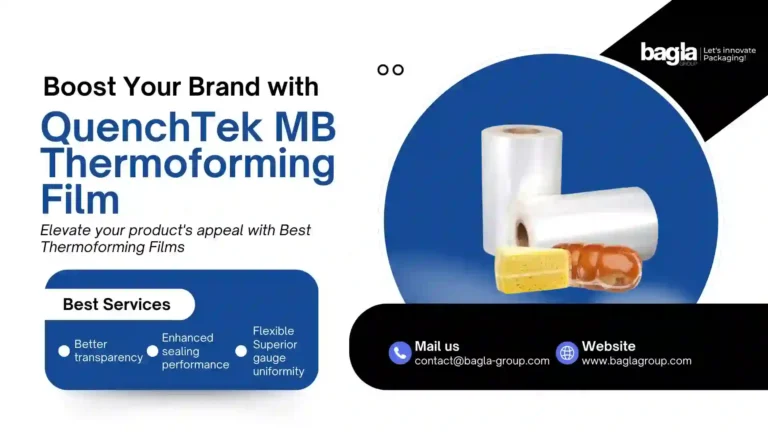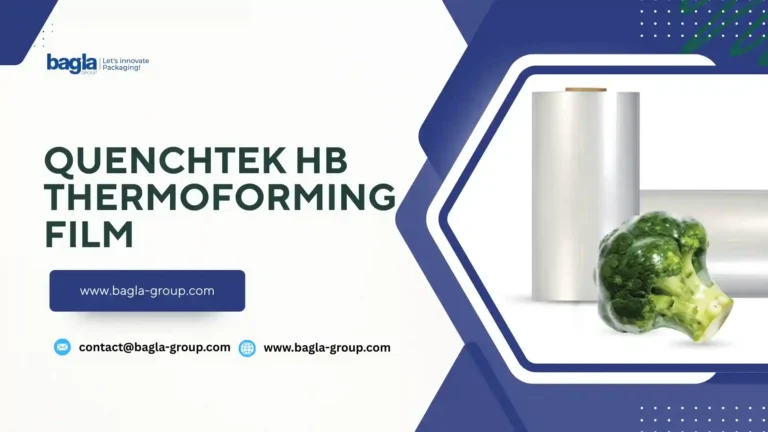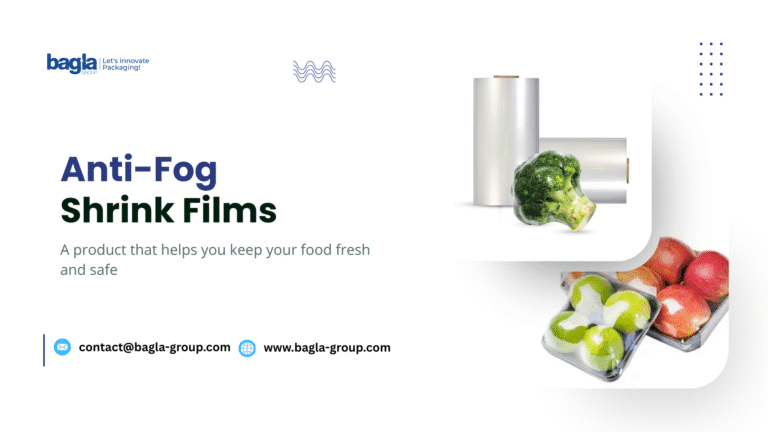Supply chain efficiency is crucial in today’s fast-paced business world, whether you operate locally or compete in the global marketplace. Everything is followed along the supply chain, from the field or factory to the retailer, and from farmers to consumers, largely ensuring food safety and the shelf life of products. However, there is one material that is quietly revolutionizing various industries worldwide (i.e., thermoforming barrier films). However, a barrier film is far more than just an effective layer that protects the product, reduces waste, and promotes sustainability within a broader context.
What Are Thermoforming Barrier Films?
Thermoforming Barrier films are a multilayer plastic film specifically designed to control the transmission of gases, moisture, odors, and other vapors. Thermoforming barrier films can consist of polyethylene (PE), polypropylene (PP), or ethylene vinyl alcohol (EVOH) and possibly other plastic materials. The films are used to package items, typically food, electronic devices, and other industrial products, to preserve the products during storage or transportation. High-barrier and medium-barrier thermoforming films protect against oxygen, water vapor, and other contaminants that can spoil a product or prevent it from arriving in optimum condition.
Why Thermoforming Barrier Films Are A Valuable Asset To The Supply Chain?
The following are the reasons why thermoforming barrier films are a valuable asset to the supply chain, as they:
- Increase Shelf Life of Products: Possibly the primary benefit of thermoforming films is their contribution to the shelf life of products. In terms of food and beverage, this equates to less spoiling, and thus less food waste, at both the retail and consumer levels.
- Improve Product Safety and Quality: Thermoforming films offer a first level of protection against contamination from toxins, UV rays, and other chemicals.
- Makes Supply Chain Efficient through Lightweight Packaging: Medium to high-barrier packaging films are significantly lighter than traditional packaging materials, such as glass or metal. This makes the supply chain efficient as they are easy to transport.
In today’s environmentally conscious world, companies are under pressure to reduce their ecological impact. Lightweight barrier films support these goals without compromising on product safety or shelf life.
Thermforming Barrier Film Applications Across Industries
Thermoforming films cover many industries, making them an adaptable and critical partner in the modern supply chain.
- Food & Beverage – Thermoforming Barrier films protect products from the time they leave their primary packaging to the consumer opens them. The barrier films can delay spoilage and contamination from vacuum-sealed meats to resealable snack bags. Such films give assurance when the consumer opens a food product. Modified atmosphere packaging is another popular type of food packaging that is designed to extend the shelf life of food. MAP works to replace the oxygen in a food package and replaces it with inert gases using thermoforming films.
- Seafood Packaging – Thermoforming barrier film is one of the reliable choices for the packaging of seafood items. It helps to keep all the seafood items safe, fresh, and increases the shelf life of the product. Your can, but these thermoforming barrier films for seafood packaging at budget prices from Bagla Group.
- Electronics – One of the biggest headaches for electronics manufacturers is the need to identify proper protection of electronic components from moisture, dust, and static. All of these variables can be addressed by utilizing thermoforming barrier films, providing ESD protection as well as protection during shipping and extended storage for electronics products.
- Agriculture – Thermoforming barrier films are commonly used for both silage wrapping and seed packaging. For silage wrap, barrier films preserve the quality of the farmed product, protecting against spoilage from pests or the external environment.
The Future Of Thermoforming Barrier Films In The Supply Chain
As supply chains develop to be more global, resilient, and sustainable, demand for sophisticated thermoforming barrier film solutions will only increase.
- E-commerce Growth: As goods are shipped directly to consumers (especially perishable or sensitive goods), packaging must perform better. Thermoforming films create a lightweight, durable, and protective solution for shipping goods directly to consumers.
- Cold Chain Expansion: As the demand for frozen and refrigerated goods grows, thermoforming barrier films that outperform under extreme temperatures will be important.
- Regenerative and Circular Systems: Brands are investing in closed-loop systems that are based on reusable, recyclable, or compostable materials. They are avoiding waste by returning the packaging (including recyclable barrier films) to a collector.
In every situation, films more often enable better, efficient supply chain performance.
Why Bagla Group For Thermoforming Barrier Films?
Choosing a packaging vendor is critical for product quality, regulatory compliance, and sustainability. Bagla Group is a first-class high/medium barrier thermoforming film manufacturer with:
- Experience: Bagla Group has decades of experience across many industries and focus areas related to high-performance flexible packaging solutions, and has built up long-standing, trusting relationships with packaging customers like you.
- Technology: Bagla Group has the most advanced multilayer films that protect your product, moisture, oxygen, UV light, and contamination.
- Custom Solutions: Bagla Group has thermoforming barrier films engineered, designed, and manufactured to your specific supply chain and regulatory systems requirements.Solved and qualified in the supply chain and regulatory systems.
- Commitment to Sustainability: Bagla Group provides recyclable, mono-material solutions to help support the sustainability initiatives you are working on.
- Proven Partner: Quality delivered consistently, on-time delivery, and one of the longest geographical distances in the world.
Conclusion
Thermoforming films have a huge opportunity right now, and they have the greatest potential for benefits in product protection, shelf life, safety, and sustainability. Thermoforimg Barrier films assist companies in examining performance and sustainability in the food or agriculture supply chains. As they reduce usage rates, they lead to compliance and deliver their consumers a quality product to purchase globally.
As continuous innovations continue to be developed, and products are enhanced, both for performance as well as sustainability. Thermoforming barrier films will always be an important part of successful supply chain logistics in a worldwide competitive market with sustainability as a priority.
What Differentiates Thermoforming Barrier Films From Standard Plastic Films?
Thermoforming Barrier films are a type of plastic film designed to prevent the transmission of gases, moisture, and contaminants. However, most of the plastic films do not have this protective mechanism.
Are Thermoforming Barrier Films Recyclable?
Yes, some thermoforming barrier films are recyclable, especially the latest mono-material type of barrier films.
What Industries Benefit Most From Thermoforming Barrier Films?
Many industries, such as food & beverages, and the agriculture sector gets benefit from barrier films.



